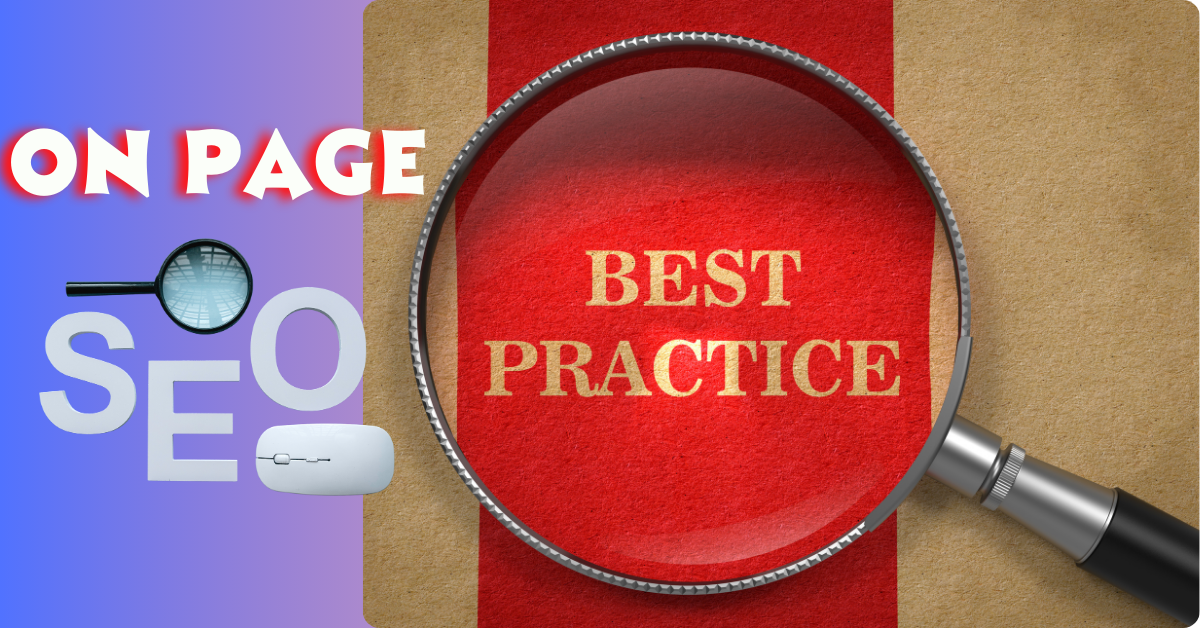
Table of Contents
ToggleStarting on page SEO best practices
I was sipping my morning tea on the balcony when suddenly the notification bell on my phone rang. I had received an email on my website with the subject line, “Need SEO Services.” The client, named Parker, runs a senior care business in Florida. Honestly, I wasn’t familiar with this business category. After doing some research, I discovered that senior care businesses are essentially residential facilities, like hostels, offering all necessary amenities for senior citizens. The services are categorized with different payment sizes and methods based on the type of care provided.
SEO strategies vary for different types of businesses. However, for this particular business, the primary strategy focuses on Local SEO. This is because senior citizens typically seek services within their own local areas, and it’s rare for someone to travel from a different region for such services. That’s the core theme here. After analyzing everything, I developed an SEO strategy tailored for Florida and submitted with a SEO Agreement Template
it to the client. He liked it and subsequently hired me to handle the Search Engine Optimization (SEO) of his website.
In this article, I will explain the on page SEO best practices I planned and implemented for his website, step-by-step, and elaborate on why these techniques are beneficial for improving his site’s search rankings.
1. Meta Description Optimization
Why did I do it?
First, I focused on the site’s meta descriptions.
If you’ve ever noticed when searching on Google, beneath the site link, there are usually a couple of lines of text. This portion is called the meta description. It should ideally be written within 160 characters because anything longer won’t be displayed in search results. Although many people write longer descriptions, Google only shows the first 160 characters. It’s crucial to summarize the site, business, and related services within this character limit, including the target keywords. Writing an optimized meta description builds credibility with search engines and helps improve your CTR (Click Through Rate).
How did I do it?
- Kept the meta description within 160 characters.
- Included the target keyword “senior home healthcare.”
- Used engaging and natural language to appeal to the target audience.
Example:
“Get trusted senior home healthcare services with personalized, compassionate care. Ensure safety, comfort, and health for your loved ones at home.”
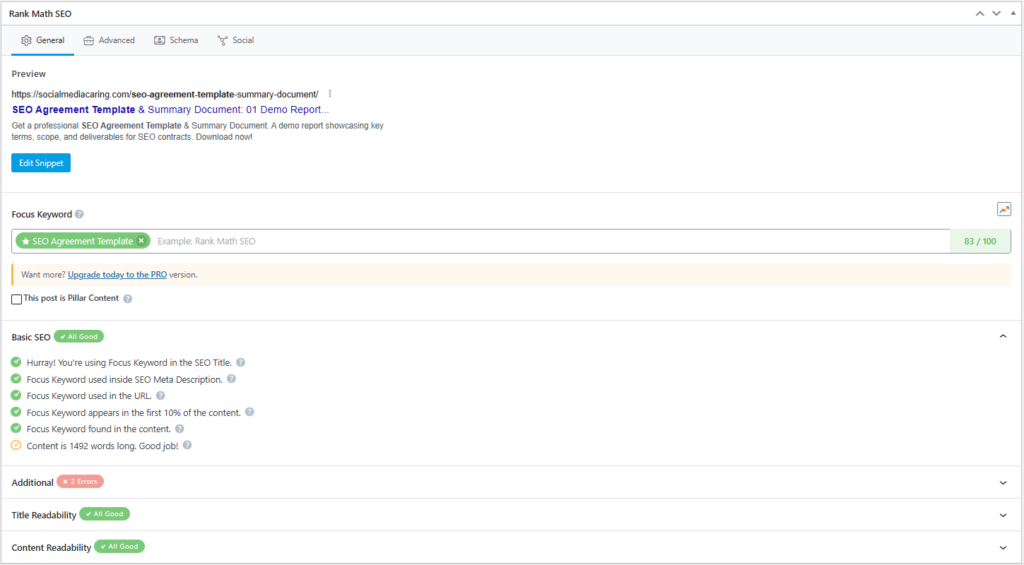
2. URL Structure Optimization
Always pay attention to the structure of your website’s pages. What do you notice? Often, links have random numbers and characters like /page-01 or other symbols, right? This can be harmful to your search ranking. So, what should you do?
Why did I do it?
The link to your page or post should reflect its content. Including relevant keywords in the URL is a huge advantage—it’s like hitting the jackpot when it comes to SEO! (In American native terms, you’d call this a win-win situation.)
How did I do it?
- Kept the URLs short and relevant, ideally within 75 characters.
- Included the target keywords in the URLs.
- Avoided unnecessary words or characters.
You can easily perform URL optimization using free versions of SEO plugins like Rank Math or Yoast SEO.
Example:
❌ www.example.com/p=12345
✅ www.example.com/best-senior-home-healthcare
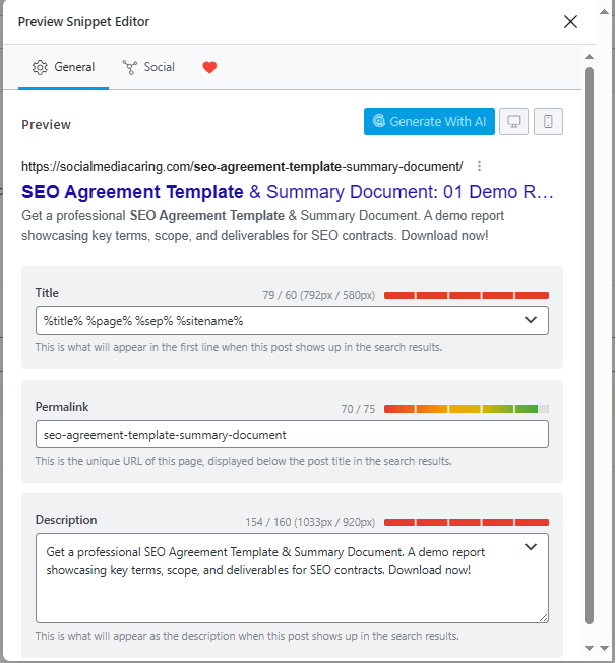
3. Using Heading Tags (H1, H2, H3)
Heading tags play a significant role in indicating to search engines how well-structured and organized your article is. For example, if you write, “Where to find the best senior home healthcare services in Florida and what amenities do they offer?”, this should be your H1 heading. Below this, if you list the specific locations or institutions, those should be under H2 headings. This makes it easier for search engine crawlers to navigate and understand your content. It’s similar to how files are organized in your phone’s download folder—you don’t have to search too much to find what you need.
If you can naturally incorporate keywords into these heading tags, it significantly boosts your SEO performance.
Why did I do it?
Heading tags help structure the webpage in a way that’s easier for both users and search engines to understand.
How did I do it?
- Used the primary target keyword in the H1 tag.
- Applied H2 and H3 subheadings to make content scanning easier.
- Incorporated keywords naturally without overstuffing.
You can easily perform URL optimization using free versions of SEO plugins like Rank Math or Yoast SEO.
Example:
<h1>How to Find the Best Senior Home Healthcare in Florida</h1>
<h2>City-wise Senior Home Healthcare Services</h2>
<h3>Group-specific Senior Home Healthcare Options</h3>
4. Image Optimization
When adding images to your posts or articles, make sure to optimize them properly. After uploading images in WordPress, there are fields like Alt Text, Title, and Description—fill these with relevant keywords. Also, ensure the images are of high quality but with lower pixel sizes to maintain fast loading speeds, which I’ll discuss in detail in the next section.
Why did I do it?
Optimizing images helps search engines understand the relevance of each image in relation to your article content.
How did I do it?
- Compressed images to ensure faster webpage loading.
- Included relevant keywords in the Alt Text.
Named image files meaningfully instead of using generic names like IMG1234.jpg.
You can easily perform URL optimization using free versions of SEO plugins like Rank Math or Yoast SEO.
Example:
<img src=”senior-home-healthcare-florida.jpg” alt=”Senior Home Healthcare in Florida” />
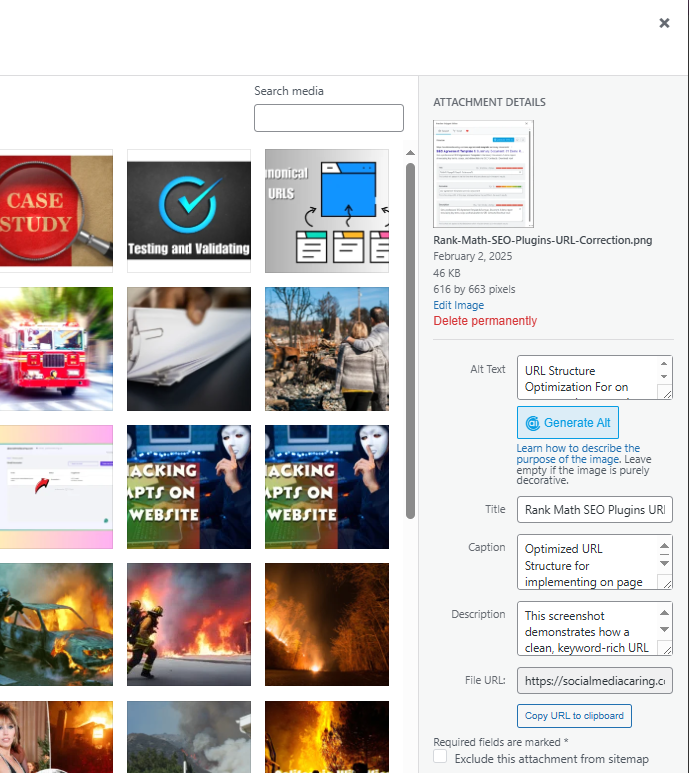
5. Internal and External Linking
Internal linking involves linking to other relevant posts or pages within your website using anchor text. If the anchor text includes your keywords, that’s even better. This strategy helps not only with the ranking of your current article but also boosts the linked page’s SEO.
External linking works similarly, but here, you link to other credible websites. For example, when mentioning Rank Math or Yoast SEO, adding their official links naturally within the content benefits both sites.
Why did I do it?
Internal links create a network of pages within your site, improving navigation and SEO. External links to authoritative websites build trust and credibility.
How did I do it?
- Linked to related content within my website.
- Added external links to websites with high Domain Authority (DA) for credibility.
Example:
<a href=”https://www.example.com/rank-math”>Learn more about On-Page SEO</a>
6. Content Optimization
This is the backbone of whether an article will rank or not. You must ensure your content is easy to read and engaging for your audience while maintaining the right keyword density. Overusing keywords (keyword stuffing) is harmful, and too few keywords won’t help either. This balance is known as keyword density, and maintaining it is crucial.
Adding engaging elements like anecdotes or interesting facts increases readability and keeps readers hooked.
Why did I do it?
Search engines rely on algorithms to evaluate content relevance, and proper keyword usage plays a key role in this. Balanced keyword density makes search engines “happy” and more likely to rank your content higher.
How did I do it?
- Wrote informative articles exceeding 1,000 words.
- Incorporated keywords naturally throughout the content.
7. Mobile-Friendly Design
Think about it—your computer display and your mobile display aren’t the same size. So, while your website might look great on a computer, the layout could break or look cramped on mobile devices. Since most users browse from their phones, ensuring a mobile-friendly design is critical for any site’s success.
Why did I do it?
Google now follows mobile-first indexing, meaning it prioritizes the mobile version of your site when determining rankings.
How did I do it?
- Used responsive design techniques with the help of Elementor.
- Adjusted font sizes and button placements for both desktop and mobile versions.
- Tested the website using Google’s Mobile-Friendly Test to ensure optimal performance.
By following these on page SEO best practices, you can ensure your content is well-optimized for search engines while also providing a smooth and engaging experience for your readers.
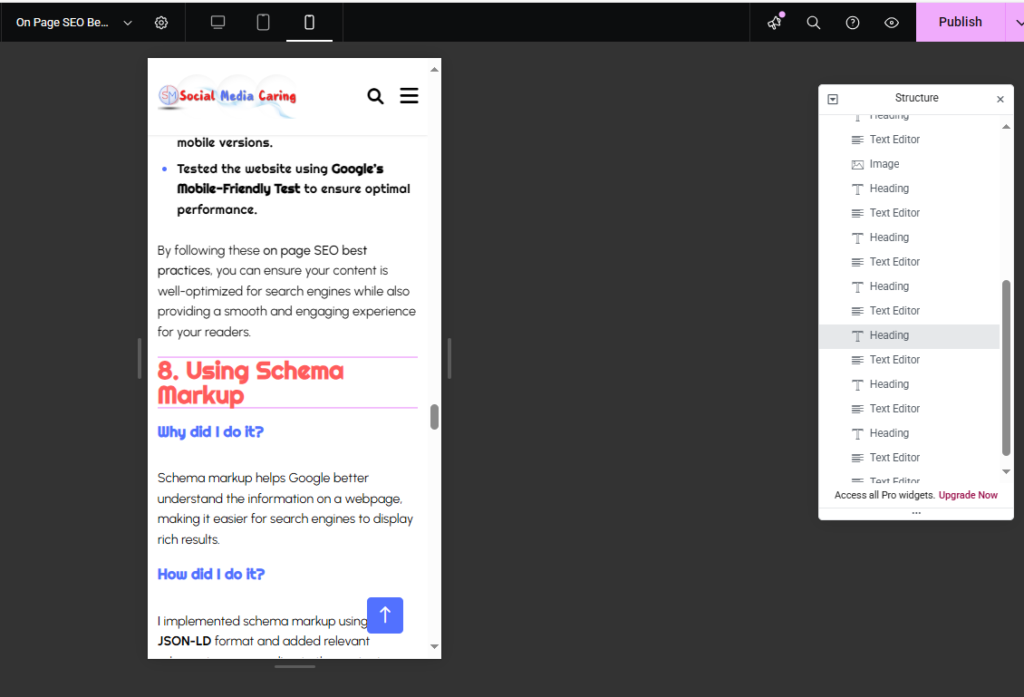
8. Using Schema Markup
Why did I do it?
Schema markup helps Google better understand the information on a webpage, making it easier for search engines to display rich results.
How did I do it?
I implemented schema markup using the JSON-LD format and added relevant schema types according to the content.
9. Page Loading Speed Optimization
When you click on a link to access a website, the faster the page loads and appears on your screen, the better the user experience. Conversely, if the page takes too long to load, it negatively affects the site’s performance in the eyes of search engines.
Why did I do it?
A slow page loading speed increases the bounce rate, meaning visitors leave the site quickly if it takes too long to load.
How did I do it?
- Minified CSS and JavaScript files.
- Used a Content Delivery Network (CDN).
- Uploaded optimized images with lower file sizes but good resolution.
10. Enhancing User Experience (UX)
User experience is the heart of a website. When visitors come to your site, you need to ensure their interaction is smooth and enjoyable. This includes everything from the layout, navigation, and content to the contact forms. The goal is to create an experience that feels as comfortable as a hotel stay, encouraging users to return.
Why did I do it?
A good UX improves the website’s retention rate, keeping users engaged longer.
How did I do it?
- Implemented simple navigation.
- Ensured a user-friendly design.
There are various tools and plugins available to monitor and maintain these optimizations, helping you fine-tune your input and output in each area. By consistently maintaining these elements, your on page SEO efforts will yield better results.
Conclusion
After applying these on page SEO best practices, the client’s website saw a noticeable improvement in search rankings and increased traffic. If you need similar SEO optimizations for your website, following these steps can help achieve better results.
- Content Optimization
- Florida Senior Care SEO
- Improving Website Ranking
- Local SEO Tips
- On-Page SEO Best Practices
- Page Speed Optimization
- Schema Markup for SEO
- Senior Care Marketing
- SEO Case Study
- SEO for Healthcare Websites
- SEO for Senior Care Business
- Strategies SEO for Small Businesses in Florida
- Technical SEO for WordPress
- User Experience Optimization
- WordPress SEO Optimization





3 Comments
10 Powerful Meta Description Best Practices to Skyrocket Your Click-Through Rate - Social Media Caring
[…] content. Among the various elements of SEO, the Meta Description is one of the key components of on page SEO. It is a part of the website that appears in search results and plays a significant role in […]
How To Find Low Hanging Fruit Keywords with 01 Practical Keyword Analyzing Journey - Social Media Caring
[…] […]
💖 Valentine's Day Social Media Campaign: 01 Love + 01 Marketing = 1st Virality! - Social Media Caring
[…] I study SEO and work with different businesses and websites, I always analyze marketing trends and branding strategies. […]